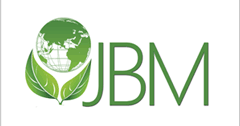Abstract
This study was performed to evaluate the potential contamination of the Okponha river situated near a dumpsite in Okada, Edo State, Nigeria. Water samples were collected and analyzed for bacteriological and parasitological quality using standard procedures. Isolation and enumeration of bacterial colonies were performed by pour plate technique and the isolated bacteria were identified by standard phenotypic tests. Helminths and protozoa were screened by the direct smear technique. The values of HPC (3.79 ± 0.12 log10 CFU/ml) and TCC (2.20 ± 0.14 log10 CFU/ml) obtained from the river water samples exceeded WHO and NAFDAC recommended limits (≤ 2 log10 CFU/ml and ≤ 1 log10 CFU/ml for HPC and TCC respectively). Bacillus spp., Enterobacter spp., Staphylococcus aureus and Chromatium spp. were the bacteria that were found in the river water samples. Except for the Chromatium spp., the same bacteria present in the river water were also found in the dumpsite soil, thus indicating a potential runoff from the dumpsite. Ascaris lumbricoides and Trichuris trichiura were the main helminth species that were seen in the river water and dumpsite samples, while the main protists that were identified included Entamoeba coli and Giardia lamblia. The high bacterial load seen in the river water is a source of concern because the water is used for a wide range of domestic purposes by inhabitants. Therefore, health authorities should make the public aware of the potential danger in using untreated water as a source of drinking water and also encourage in-house treatment of the raw water.
Article History
Received: Aug 30, 2021; Accepted: Nov 08, 2022; Published: March 24, 2022
Recommended Citation
Okafor-Elenwo, E. J.,
Imade, O. S.,
& Izevbuwa, O. E.
(2022).
Microbiological Contamination Associated with the Proximity of A Refuse Dumpsite to a River Situated in Okada, Edo State, Nigeria,
Journal of Bioresource Management, 9
(1).
Included in
Biology Commons, Environmental Microbiology and Microbial Ecology Commons, Medicine and Health Sciences Commons





